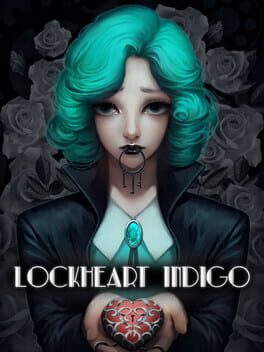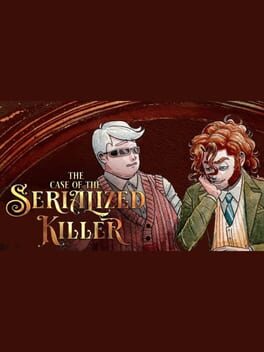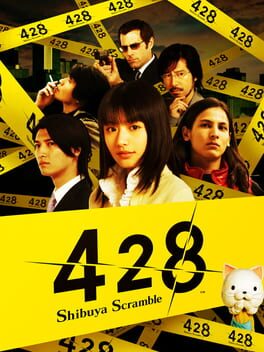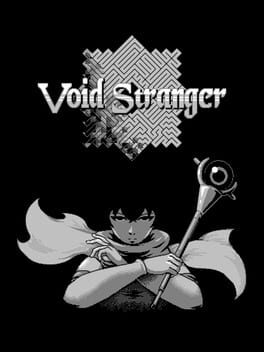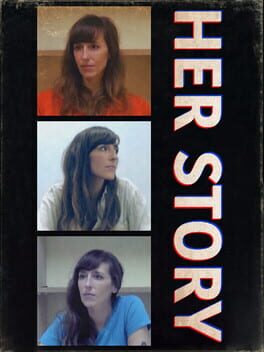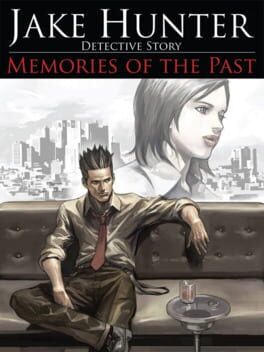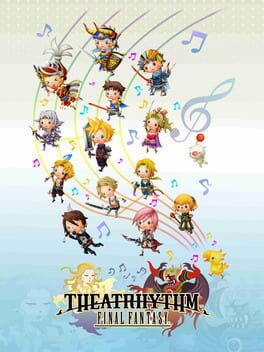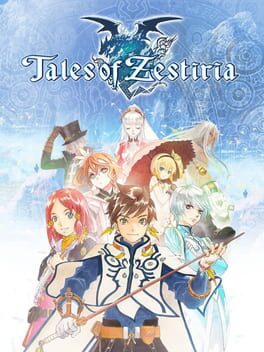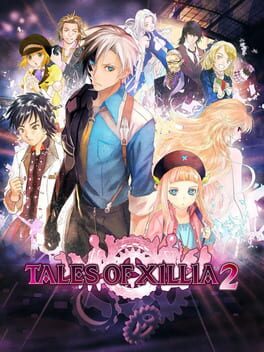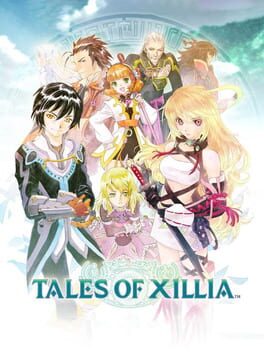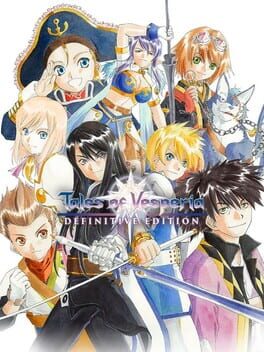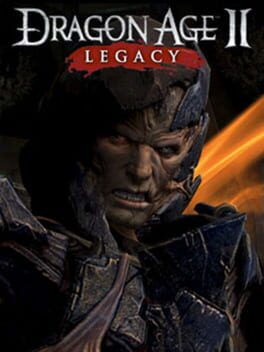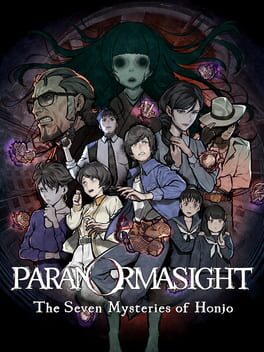bellwoods
2020
2019
Her Story had better pacing.
That might seem like a strange thing to say about two games which can be played in any order, but Her Story is very clear upfront about the shape of the story (a disappearance turned murder) and your goal (solving said murder). It took me two hours of Telling Lies to even guess what I was supposed to be investigating. Her Story made it easy for you with the implausible contrivance that only the interviewee's dialogue was saved. This allowed for short clips with the occasional out-of-context whammy. Here, you are scrubbing through video calls that are often seven, eight, nine minutes long. It's more realistic, but also more of a slog. Especially when matching two sides of a video chat to each other: there are many recordings that are just: 🤨😐🤨🤨😮😬😔😐😐😐😠
As far as the plot, it's dealing with some heavy and topical issues, with mixed success. An intelligent point, with an unsatisfying delivery. And less emotional rapport with the protagonist. Specific spoilery thoughts in ROT 13 (CW sexual violence, police brutality):
Fb, V guvax gur cynlre vf vagraqrq gb qenj n yvar orgjrra Crgre'f hapurpxrq frkhny nohfr va gur npgvivfg pvepyr (juvpu vaibyirq gnxvat abapbafrafhny ivqrbf bs na haqrentr Nin) naq Qnivq fgnegvat n frkhny eryngvbafuvc jvgu Nin haqre snyfr cergrafrf (v.r. encr ol qrprcgvba). Gvr gung gb Znkvar'f pnz fubjf, juvpu vapyhqr inzcver/ulcabfvf/fyrrc cynl naq bgure sbezf bs jung fur pnyyf "encr snagnfl"--gur vyyhfvba bs jngpuvat n fyrrcvat jbzna jvgubhg ure xabjyrqtr, naq gur ercrngrq Fabj Juvgr zbgvs (Cevapr Punezvat fnirf Fabj Juvgr ol xvffvat ure juvyr fur vf nfyrrc). Ohg gura gur cynlre (nf SOV ntrag Xnera) nyfb unf gb pbzo guebhtu ubhef bs frk pungf naq bgurejvfr crefbany zngrevny npdhverq ol yrtnyyl dhrfgvbanoyr zrnaf. Vf jung jr'er qbvat nal orggre, be yrff iblrhevfgvp? Pbapyhfvba: fgngr fheirvyynapr vf ivbyngvat.
Ohg vs lbh nyernql nterr jvgu guvf cerzvfr--yrg nybar vs lbh'ir rkcrevraprq nalguvat yvxr gur riragf qrcvpgrq--gur bhgpbzr jvyy cebonoyl yrnir lbh pbyq. Oybjvat hc n oevqtr naq xvyyvat uvzfrys vfa'g gnxvat nppbhagnovyvgl, naq qbrfa'g uryc gur jbzra ur'f jebatrq, be gur crbcyr ur'f zheqrerq naq nffnhygrq. Juvpu, fher, Qnivq vf n cerggl greevoyr crefba, fb V pna ohl uvz znxvat n qrpvfvba yvxr gung. Ohg vg'f abg rknpgyl fngvfslvat. Gurer'f ab whfgvpr urer.
Anyway, that critique wasn't even why I stopped playing. It was actually because manually scrubbing through long videos on a trackpad (there are no buttons) was physically uncomfortable. I got the gist of what was happening and then dipped.
That might seem like a strange thing to say about two games which can be played in any order, but Her Story is very clear upfront about the shape of the story (a disappearance turned murder) and your goal (solving said murder). It took me two hours of Telling Lies to even guess what I was supposed to be investigating. Her Story made it easy for you with the implausible contrivance that only the interviewee's dialogue was saved. This allowed for short clips with the occasional out-of-context whammy. Here, you are scrubbing through video calls that are often seven, eight, nine minutes long. It's more realistic, but also more of a slog. Especially when matching two sides of a video chat to each other: there are many recordings that are just: 🤨😐🤨🤨😮😬😔😐😐😐😠
As far as the plot, it's dealing with some heavy and topical issues, with mixed success. An intelligent point, with an unsatisfying delivery. And less emotional rapport with the protagonist. Specific spoilery thoughts in ROT 13 (CW sexual violence, police brutality):
Fb, V guvax gur cynlre vf vagraqrq gb qenj n yvar orgjrra Crgre'f hapurpxrq frkhny nohfr va gur npgvivfg pvepyr (juvpu vaibyirq gnxvat abapbafrafhny ivqrbf bs na haqrentr Nin) naq Qnivq fgnegvat n frkhny eryngvbafuvc jvgu Nin haqre snyfr cergrafrf (v.r. encr ol qrprcgvba). Gvr gung gb Znkvar'f pnz fubjf, juvpu vapyhqr inzcver/ulcabfvf/fyrrc cynl naq bgure sbezf bs jung fur pnyyf "encr snagnfl"--gur vyyhfvba bs jngpuvat n fyrrcvat jbzna jvgubhg ure xabjyrqtr, naq gur ercrngrq Fabj Juvgr zbgvs (Cevapr Punezvat fnirf Fabj Juvgr ol xvffvat ure juvyr fur vf nfyrrc). Ohg gura gur cynlre (nf SOV ntrag Xnera) nyfb unf gb pbzo guebhtu ubhef bs frk pungf naq bgurejvfr crefbany zngrevny npdhverq ol yrtnyyl dhrfgvbanoyr zrnaf. Vf jung jr'er qbvat nal orggre, be yrff iblrhevfgvp? Pbapyhfvba: fgngr fheirvyynapr vf ivbyngvat.
Ohg vs lbh nyernql nterr jvgu guvf cerzvfr--yrg nybar vs lbh'ir rkcrevraprq nalguvat yvxr gur riragf qrcvpgrq--gur bhgpbzr jvyy cebonoyl yrnir lbh pbyq. Oybjvat hc n oevqtr naq xvyyvat uvzfrys vfa'g gnxvat nppbhagnovyvgl, naq qbrfa'g uryc gur jbzra ur'f jebatrq, be gur crbcyr ur'f zheqrerq naq nffnhygrq. Juvpu, fher, Qnivq vf n cerggl greevoyr crefba, fb V pna ohl uvz znxvat n qrpvfvba yvxr gung. Ohg vg'f abg rknpgyl fngvfslvat. Gurer'f ab whfgvpr urer.
Anyway, that critique wasn't even why I stopped playing. It was actually because manually scrubbing through long videos on a trackpad (there are no buttons) was physically uncomfortable. I got the gist of what was happening and then dipped.
This review contains spoilers
Man, I really, really wanted to like this game, given its reputation in the genre, but I came away disappointed. Blame heightened expectations, perhaps, but when you're playing a game that infamously received a perfect score, the imperfections stand out: the drawn-out endgame and associated difficulty spike, the numerous fat jokes, the stereotypes about Southwest Asia, losing your only main route girl at 5 p.m...
I can still see why it had such a profound influence on VNs. The gameplay loop is fun and innovative, hopping between narratives to facilitate serendipitous coincidences and chance encounters that lead to a good outcome. There are a couple of great twists and brilliant brick jokes. But I just didn't like the story once it turned serious. Minorikawa's route was easily my favourite (Run Lola Run for writers) and it's the one with the least connection to the overarching plot.
I can still see why it had such a profound influence on VNs. The gameplay loop is fun and innovative, hopping between narratives to facilitate serendipitous coincidences and chance encounters that lead to a good outcome. There are a couple of great twists and brilliant brick jokes. But I just didn't like the story once it turned serious. Minorikawa's route was easily my favourite (Run Lola Run for writers) and it's the one with the least connection to the overarching plot.
2023
2015
I managed to discourage myself from engaging with Her Story for quite a while, because I'd seen many people relate that they'd stumbled upon the solution "early" after having a cunning insight or lucky guess. After playing it, I feel like this was totally intentional: that the game paces itself, so to speak, such that any order you attack it will produce a viable story structure and "aha!" moments. It's not stingy with its clues, instead trusting the player to self-pace. The more I think about it, that's a really impressive magic trick.
My wife and I played it together--probably the best way to play it, really, in a group tossing out keywords. We got all the key scenes and the prompt to finish having seen (iirc) just under half the clips, then watched them again in chronological order for full context. (Appreciate that this was not a requirement for basic completion.)
In a story like this, character work is make-or-break, and Viva Seifert's performance carried it. I really don't expect to come out of a mystery like this feeling strongly about the characters, but here I really did. The subgenre turn might not be for everyone, but it worked for me.
My wife and I played it together--probably the best way to play it, really, in a group tossing out keywords. We got all the key scenes and the prompt to finish having seen (iirc) just under half the clips, then watched them again in chronological order for full context. (Appreciate that this was not a requirement for basic completion.)
In a story like this, character work is make-or-break, and Viva Seifert's performance carried it. I really don't expect to come out of a mystery like this feeling strongly about the characters, but here I really did. The subgenre turn might not be for everyone, but it worked for me.
All I knew about this one was how much of a mess the original release was, so I was pleasantly surprised that the mysteries were actually pretty solid. My favourite was case 4 (where you get to play as Yoko/Yulia). The main cases are in a noir/realistic crime drama mode, while the "Unleashed" cases are more like five-minute mysteries.
Mechanically, there is some retro clunk, but having played plenty of menu-based adventure games, this didn't bother me. I don't have a comparison point for the original 80s games, but just based on this remake I felt like you could see some of the tone/style of this series in later detective games, moreso than e.g. Famicom Detective Club.
This is the "fixed" translation, which is hammier than a pulled pork stand at the State Fair (great). It's still aggressively Americanized (not great). This led to some bonkers moments such as a plot beat that relied on the map of the Tokyo Metro--or rather, the Aspicio subway system. Except since these are now fictional locations, the deduction turns into pointless, hard-to-follow process of elimination. Also there's a tendency to abbrv wrds to fit on the bttns, which occasionally makes deductions difficult. But you can't really fail, so.
Anyway, overall I enjoyed it a lot, and I'm glad I played it, though between the heavy localization, numerous typos, and at least one bug, I'm still rating it a 3 rather than a 4.
Mechanically, there is some retro clunk, but having played plenty of menu-based adventure games, this didn't bother me. I don't have a comparison point for the original 80s games, but just based on this remake I felt like you could see some of the tone/style of this series in later detective games, moreso than e.g. Famicom Detective Club.
This is the "fixed" translation, which is hammier than a pulled pork stand at the State Fair (great). It's still aggressively Americanized (not great). This led to some bonkers moments such as a plot beat that relied on the map of the Tokyo Metro--or rather, the Aspicio subway system. Except since these are now fictional locations, the deduction turns into pointless, hard-to-follow process of elimination. Also there's a tendency to abbrv wrds to fit on the bttns, which occasionally makes deductions difficult. But you can't really fail, so.
Anyway, overall I enjoyed it a lot, and I'm glad I played it, though between the heavy localization, numerous typos, and at least one bug, I'm still rating it a 3 rather than a 4.
2016
There are the 3-star games that are "just okay", and 3-star games that average out from epic highs and equally epic lows. This is very much the latter. Loved most of the plot, best party in a Tales game bar none, and Velvet is a great protagonist. But it's also bogged down by an ending I didn't care for, oversexualized female character designs, and numerous mechanical annoyances.
The combat system is much-maligned, even (especially) among Tales veterans, who often find it "too easy" and "button mashing". This was also my opinion at first, but after engaging with the systems for what they are (instead of just "this is not like other Tales games"), I ended up finding a lot of joy in Switch Blasts, Break Souls, Mystic Arte chains, and derivative artes. I mostly played as Eleanor, who has tremendous AoE and a fun capacity to juggle enemies, and any time I was inflicted with a status effect I got rid of it by Switch-Blasting to someone else. Swapping in and out and perpetually changing playstyles made things more enjoyable and chaotic.
I still found the vast majority of the bosses quite easy-- way too easy, really, like they weren't scaled to Hard difficulty. I'm not sure if there is a way to scale it to a challenging sweet spot, to be honest--the way the combat works creates a snowball effect where the more staggers you (or the enemy) inflict, the better combos you can pull off. That meant that mobs were almost invariably more challenging than bosses, and most of the difficulty with bosses came from not being able to collect souls as easily, and having to chip away at their health until you perform one big combo. Bit repetitive. I don't think it's a coincidence that the final boss fight is the only dual boss fight (as far as I remember) and also one of the only tough ones.
The combat system is much-maligned, even (especially) among Tales veterans, who often find it "too easy" and "button mashing". This was also my opinion at first, but after engaging with the systems for what they are (instead of just "this is not like other Tales games"), I ended up finding a lot of joy in Switch Blasts, Break Souls, Mystic Arte chains, and derivative artes. I mostly played as Eleanor, who has tremendous AoE and a fun capacity to juggle enemies, and any time I was inflicted with a status effect I got rid of it by Switch-Blasting to someone else. Swapping in and out and perpetually changing playstyles made things more enjoyable and chaotic.
I still found the vast majority of the bosses quite easy-- way too easy, really, like they weren't scaled to Hard difficulty. I'm not sure if there is a way to scale it to a challenging sweet spot, to be honest--the way the combat works creates a snowball effect where the more staggers you (or the enemy) inflict, the better combos you can pull off. That meant that mobs were almost invariably more challenging than bosses, and most of the difficulty with bosses came from not being able to collect souls as easily, and having to chip away at their health until you perform one big combo. Bit repetitive. I don't think it's a coincidence that the final boss fight is the only dual boss fight (as far as I remember) and also one of the only tough ones.
2015
This review contains spoilers
This game has a divisive reputation among Tales fans, to say the least, so I did my best to come into Zestiria with an open mind, but I can't say I came away with a positive impression.
I was mainly interested in playing this as a companion to Tales of Berseria, Zestiria's prequel. Berseria's ending is bittersweet, leaving open the hope that someone can fix the world's fate in the future, i.e. the plot of Zestiria. If you want to follow up on these unresolved threads, it seems reasonable to play these games in chronological order.
Unfortunately, after Berseria, the themes of this game left a bad taste in my mouth. Berseria does a lot to humanize demons, treating generic fantasy enemies as people with inner lives. Zestiria plays the same fantasy tropes straight: while it might seem happier that Sorey can "purify" hellions rather than killing them (usually...), the hellions we see are either mindless monsters or innately wicked. It seems like none of the lessons from Velvet's time really stuck around in this world.
Furthermore, Artorius, Berseria's Shepherd, is... well... a fascist. He's obsessed with moral purity, blind obedience to a chosen hero, submission of the individual to the many, and the triumph of "reason" over emotion. His ideal society is one purged of social undesirables. And the Abbey is always depicted in stark shades of white. Berseria makes you root for its villain protagonists by saying "Hey, have you noticed that the hero's journey has some fascist subtext?" And granted, it's a critique of an entire genre, not just Zestiria. But after Artorius, I found it difficult to turn that interpretation off and invest myself in Sorey's journey at face value, as Zestiria's party try to keep Sorey from being tainted by negative emotions so he can stay pure, as he faces conflicts like "the ungrateful populace not immediately accepting his awesome powers and chosen one status". Those hero tropes (the ones that other game said were fascist) are played completely straight. It ends up coming off like Zestiria only exists so that Berseria can subvert it.
But I don't know that I would recommend playing Zestiria first, either. The beautiful environments and fun dungeon designs are plagued by clunky battle mechanics, sluggish AI, and perpetual camera issues. The cast are about as zesty as cornflakes--I cared about Edna and Zaveid by virtue of their connection to Eizen, but that's about it. Arguably this is as close as it comes to a Tales game with a canon gay relationship, and that still didn't save it. The plot is essentially Stranger in a Strange Land, if, when the protagonist arrived to enlighten humanity, the Martians all showed up like "Hey, you shouldn't give psychic powers to Alisha, you should give them to Rose. We all like Rose much better than Alisha. And she's smarter, too!" He couldn't even be bothered to die at the end.
I was mainly interested in playing this as a companion to Tales of Berseria, Zestiria's prequel. Berseria's ending is bittersweet, leaving open the hope that someone can fix the world's fate in the future, i.e. the plot of Zestiria. If you want to follow up on these unresolved threads, it seems reasonable to play these games in chronological order.
Unfortunately, after Berseria, the themes of this game left a bad taste in my mouth. Berseria does a lot to humanize demons, treating generic fantasy enemies as people with inner lives. Zestiria plays the same fantasy tropes straight: while it might seem happier that Sorey can "purify" hellions rather than killing them (usually...), the hellions we see are either mindless monsters or innately wicked. It seems like none of the lessons from Velvet's time really stuck around in this world.
Furthermore, Artorius, Berseria's Shepherd, is... well... a fascist. He's obsessed with moral purity, blind obedience to a chosen hero, submission of the individual to the many, and the triumph of "reason" over emotion. His ideal society is one purged of social undesirables. And the Abbey is always depicted in stark shades of white. Berseria makes you root for its villain protagonists by saying "Hey, have you noticed that the hero's journey has some fascist subtext?" And granted, it's a critique of an entire genre, not just Zestiria. But after Artorius, I found it difficult to turn that interpretation off and invest myself in Sorey's journey at face value, as Zestiria's party try to keep Sorey from being tainted by negative emotions so he can stay pure, as he faces conflicts like "the ungrateful populace not immediately accepting his awesome powers and chosen one status". Those hero tropes (the ones that other game said were fascist) are played completely straight. It ends up coming off like Zestiria only exists so that Berseria can subvert it.
But I don't know that I would recommend playing Zestiria first, either. The beautiful environments and fun dungeon designs are plagued by clunky battle mechanics, sluggish AI, and perpetual camera issues. The cast are about as zesty as cornflakes--I cared about Edna and Zaveid by virtue of their connection to Eizen, but that's about it. Arguably this is as close as it comes to a Tales game with a canon gay relationship, and that still didn't save it. The plot is essentially Stranger in a Strange Land, if, when the protagonist arrived to enlighten humanity, the Martians all showed up like "Hey, you shouldn't give psychic powers to Alisha, you should give them to Rose. We all like Rose much better than Alisha. And she's smarter, too!" He couldn't even be bothered to die at the end.
2012
I liked the Xillia cast much better here than in their own game, but this still felt underbaked. It's a shame, because there are some genuinely stellar moments in this one, bits where I really felt it could've been something special, but it just didn't quite deliver. The medical debt satire, Fractured Milla, the duel with Julius, the entirety of Chapter 12--all of this was great. But again, it felt very rushed, like they wanted it to be a branching game and had to settle for almost total linearity. The ending is abrupt, to say the least, and brings to mind Mass Effect 3.
The premise, which is interestingly dark, is that the PC Ludger is an agent sent to destroy timelines that diverge from the main one. As it turns out, some of these timelines are arguably better than our own: ones in which a character from the first Xillia got to live, or have alternate versions of familiar characters we come to care about. Tales as a series loves twists where there is secretly another world, the monsters are human, your enemy is the hero of another story, and so on and so forth. So I kept waiting for the other shoe to drop--but it never did. The idea that there is an objective alpha timeline--yours--is never challenged, even though there are definitely alternate Ludgers in alternate timelines who are also being sent to destroy divergence catalysts.
The premise, which is interestingly dark, is that the PC Ludger is an agent sent to destroy timelines that diverge from the main one. As it turns out, some of these timelines are arguably better than our own: ones in which a character from the first Xillia got to live, or have alternate versions of familiar characters we come to care about. Tales as a series loves twists where there is secretly another world, the monsters are human, your enemy is the hero of another story, and so on and so forth. So I kept waiting for the other shoe to drop--but it never did. The idea that there is an objective alpha timeline--yours--is never challenged, even though there are definitely alternate Ludgers in alternate timelines who are also being sent to destroy divergence catalysts.
2011
This review contains spoilers
Oh, Xillia. Between its underbaked plot, baffling pro-child-marriage polemic, and habit of recycling locations but tinted green, there are many frustrations to be had here. But I just want to talk about the Milla route (or lack thereof), which is genuinely one of the most aggravating experiences I've ever had in a video game.
The game bills itself as having the first female co-protagonist, so going in not knowing much about it, I assumed this meant that you could choose your player character (Jude or Milla), and go through approximately the same story with minor variations. This is... not the case.
Partway through Act 1, Milla is seriously injured and removed from the party. You are forced to play as Jude. On the Milla route. Eventually, though, return controls to Milla--and the game, as if warning you of what is to come, asks if you would like to switch back to Milla or keep playing as Jude. If you, like me, stubbornly decide to play as Milla anyway, you're in for a rude surprise when Milla... dies. Just straight-up dies. You can now play as her while dead, missing all the actual plot events that occur while she's out.
"Man, I wish they had done this with Aerith!"--Nobody.
Luckily, she's later resurrected, in a deus ex machina for whatever the plot was that was happening offscreen. Between the introduction of Muzet, Alvin's betrayal, Jude's mental breakdown, their fight to the death, and Leia getting shot, there's a lot to catch up on. This is all conveyed to you via optional skits.
Even when you do get to play as Milla, the game doesn't really feel like it's in her perspective. Case in point: the many scenes where Milla talks to spirits, and the player is not able to see the spirits that she can see. Contrast this with Sorey's ability to see Malakhim in Zestiria--we can see characters like Mikleo or Lailah, and the humour comes from the supporting cast being unable to. Perhaps this is partly due to what feels like a rushed development schedule, rather than just not putting any thought into the character, but neither option is good.
In conclusion, Milla's "route" feels at best like a side story for players who have already completed what is clearly intended to be the actual game, Jude's "route", and I have no idea why they didn't implement things this way.
The game bills itself as having the first female co-protagonist, so going in not knowing much about it, I assumed this meant that you could choose your player character (Jude or Milla), and go through approximately the same story with minor variations. This is... not the case.
Partway through Act 1, Milla is seriously injured and removed from the party. You are forced to play as Jude. On the Milla route. Eventually, though, return controls to Milla--and the game, as if warning you of what is to come, asks if you would like to switch back to Milla or keep playing as Jude. If you, like me, stubbornly decide to play as Milla anyway, you're in for a rude surprise when Milla... dies. Just straight-up dies. You can now play as her while dead, missing all the actual plot events that occur while she's out.
"Man, I wish they had done this with Aerith!"--Nobody.
Luckily, she's later resurrected, in a deus ex machina for whatever the plot was that was happening offscreen. Between the introduction of Muzet, Alvin's betrayal, Jude's mental breakdown, their fight to the death, and Leia getting shot, there's a lot to catch up on. This is all conveyed to you via optional skits.
Even when you do get to play as Milla, the game doesn't really feel like it's in her perspective. Case in point: the many scenes where Milla talks to spirits, and the player is not able to see the spirits that she can see. Contrast this with Sorey's ability to see Malakhim in Zestiria--we can see characters like Mikleo or Lailah, and the humour comes from the supporting cast being unable to. Perhaps this is partly due to what feels like a rushed development schedule, rather than just not putting any thought into the character, but neither option is good.
In conclusion, Milla's "route" feels at best like a side story for players who have already completed what is clearly intended to be the actual game, Jude's "route", and I have no idea why they didn't implement things this way.
Near the end of Act 1, you think: "Aha! Now we're getting into the real story!" This happens three or four times before the end of the game, and none of these plot threads are fully developed. I'd say only two of the party members have full character arcs, and neither of them is Yuri, the alleged protagonist.
Nonetheless, I have hundreds of hours in this game, purely because it's fun to play. Judith is up there for "most joyful player-controlled experience" across the entire Tales series. I had a great time with the secret missions and the many bonus dungeons.
Also, there's a sidequest that involves having your dog pee on every corner of the map. Not sure what to do with that information.
Nonetheless, I have hundreds of hours in this game, purely because it's fun to play. Judith is up there for "most joyful player-controlled experience" across the entire Tales series. I had a great time with the secret missions and the many bonus dungeons.
Also, there's a sidequest that involves having your dog pee on every corner of the map. Not sure what to do with that information.
Really interesting little visual novel with an excellent cast, unusual format, and a nice satisfying mystery (in the main route) that gradually clicks into place. Included many meta experiments with gameplay, some of which worked wonderfully, and some of which left me cold. Loved Harue's route in particular (I can't think of many games where I get to play as a middle-aged woman.) The jumpscares I found a little much, initially, but they trail off at the end of chapter 1. Very much worth the time and money, and I hope they make a sequel!
